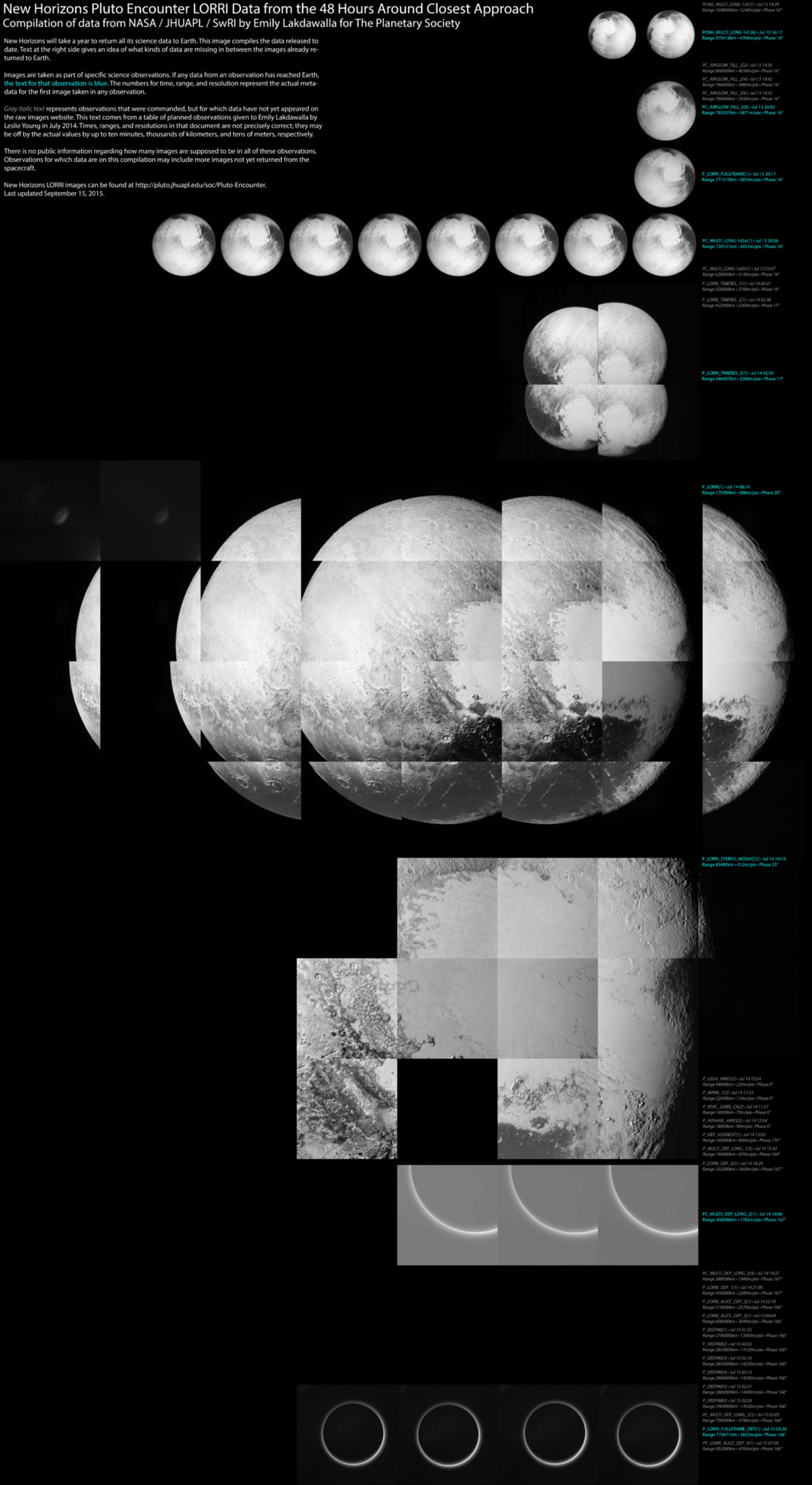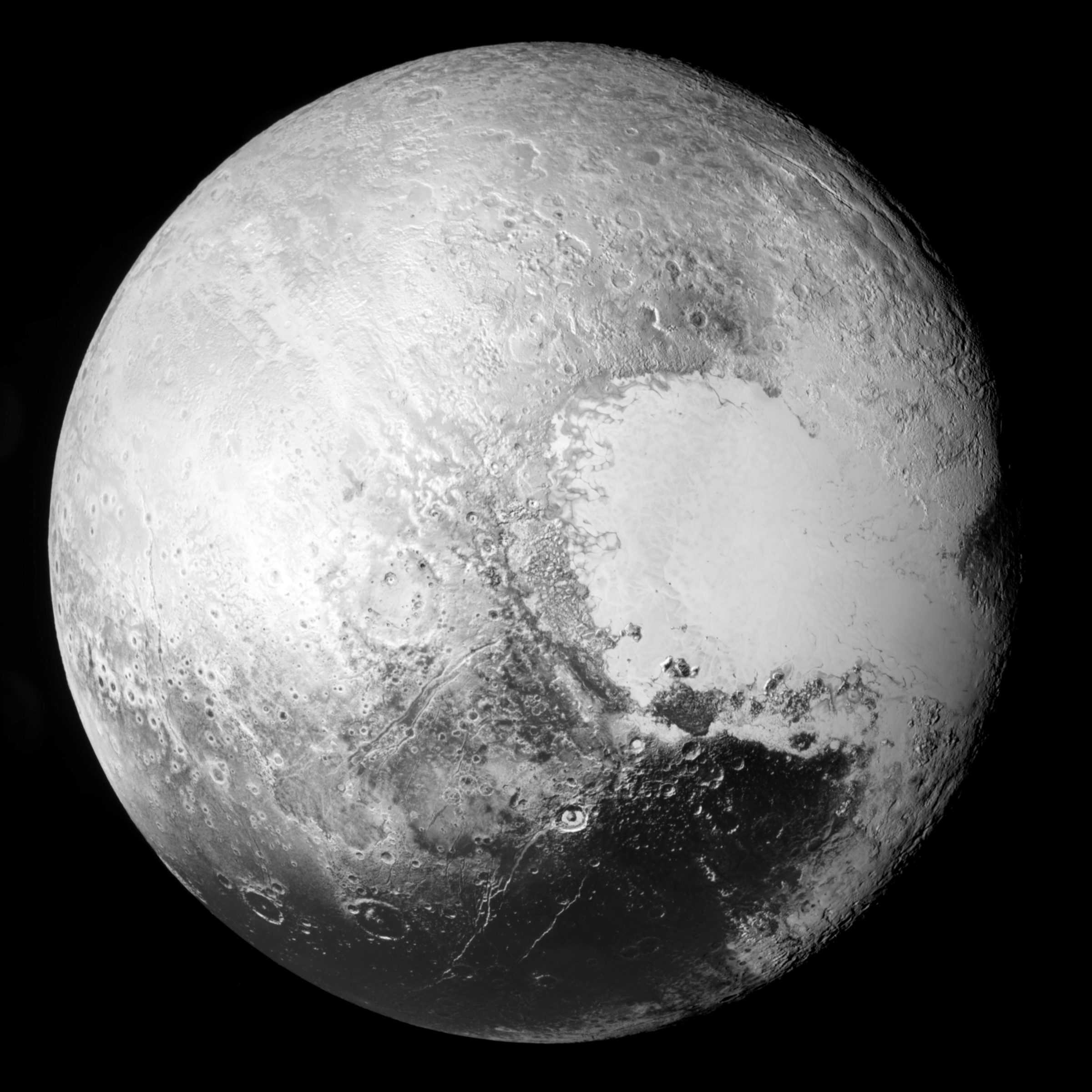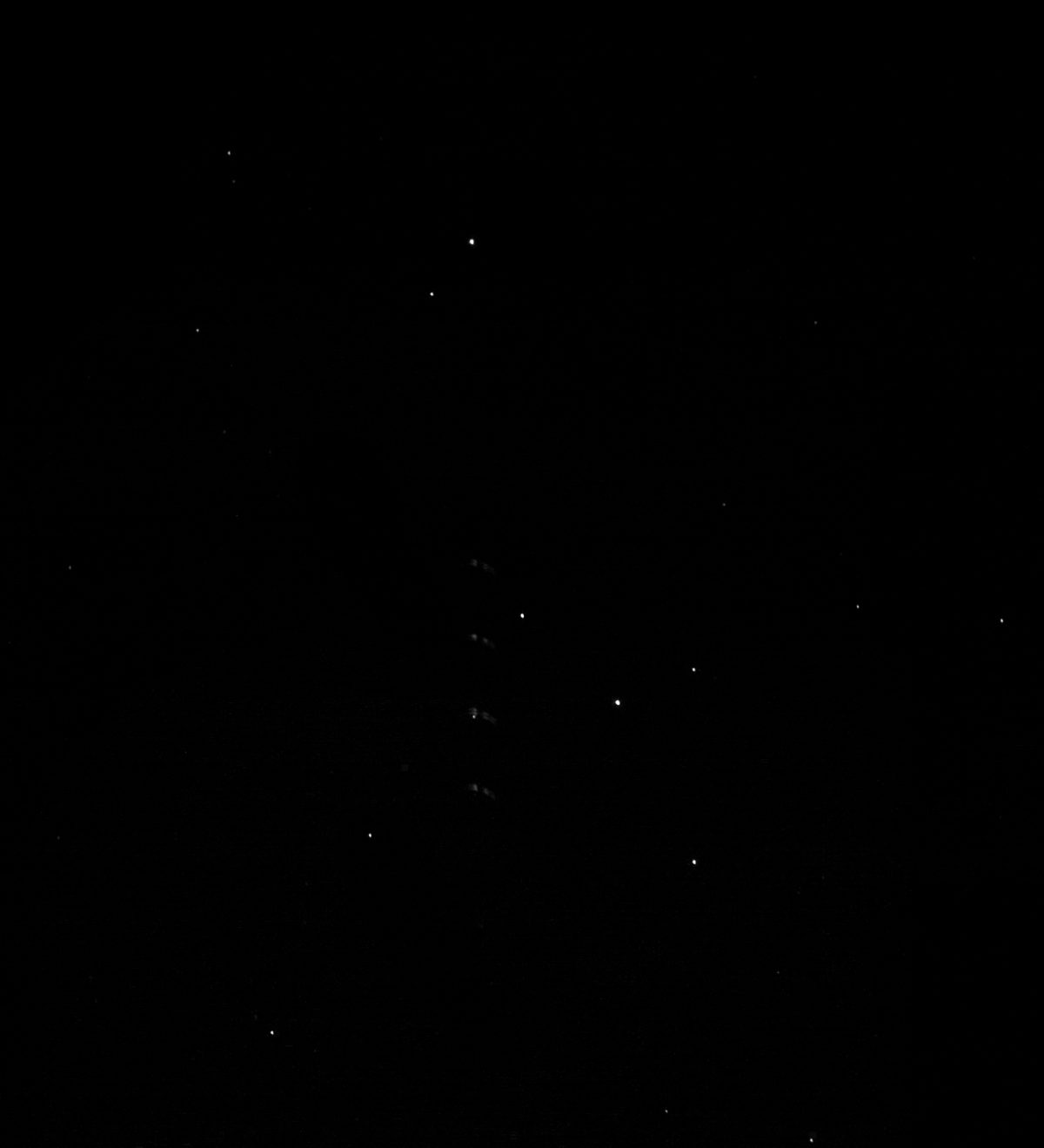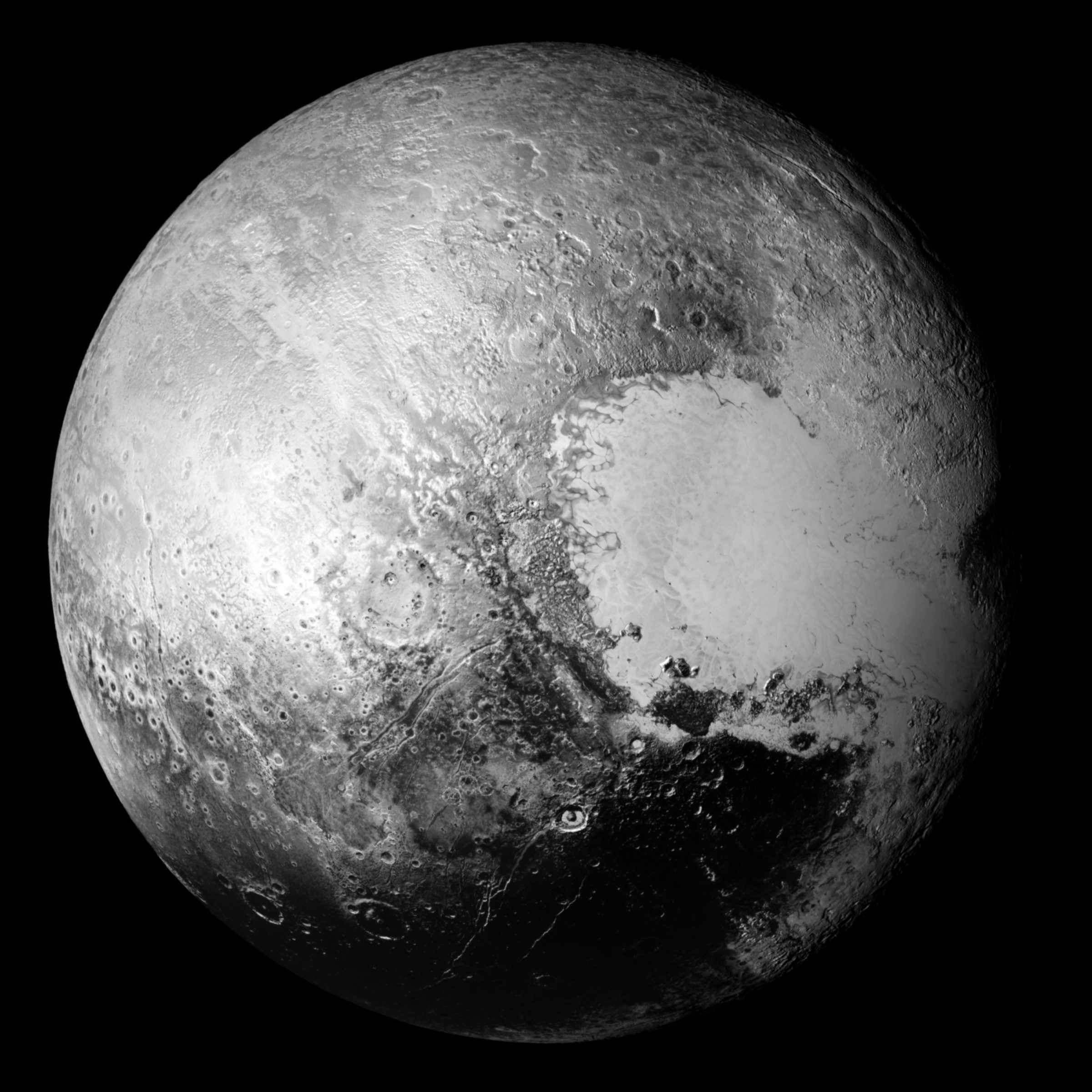Emily Lakdawalla • Sep 15, 2015
Roundup of the September 11, 2015 New Horizons raw image release
Last Friday the Internet received its first post-encounter pile of goodies from the New Horizons flyby of the Pluto system. The mission gave a preview of some of the good stuff the day before, but there was a lot more to be excited about in the first of what will be many fun Friday raw image releases on the mission's raw image website. Last Friday's haul of new pictures included:
- 32 frames for two copies of a huge, complete, global mosaic of Pluto at about 800 meters per pixel
- 4 additional frames for the second-highest-resolution mosaic of part of Pluto's surface
- 3 more post-encounter "lookback" images
- 2 sets of global views of Pluto taken 20 and 15 hours before closest approach (in which Pluto was still smaller than the frame)
- 2 sets of global views of Charon taken 21 and 10 hours before closest approach
- The best global views of Nix we've seen yet (though not the best we'll see)
- 16 images of a skinny crescent Nix taken on departure
- Better versions of the Hydra images we already had
A very important difference between the latest haul of images and the ones we were getting in July is that New Horizons is now transmitting all its data to Earth with lossless compression. This is a major change in plan. Principal Investigator Alan Stern explained in a Hangout on Friday. The science team found that while performing JPEG compression on the images before transmitting them from the spacecraft made the data come down more quickly, the cost in terms of the quality of the data was too high; too many science investigations were being too negatively impacted by the inability to tell the difference between small features and compression artifacts. So they have decided not to do any compression and just go straight to lossless data transmission. The images that are getting shared to the raw images website are converted to JPEG format before being shared, which does introduce compression artifacts in the images being shown to the public. In my experience of the data so far, those artifacts are minimal; these new images are far more detailed and crisp than what we were seeing in July.
To give you a sense of what we've received and how much we have left to receive, here is a visual summary of all the Pluto images released from the period spanning 48 hours before closest approach. I chose this period because I have a detailed list of observations that New Horizons planned to make during this time, so I can get a sense of what hasn't come down yet. If you look down the right side of the image, you'll see a column of text, some of which is blue and some of which is gray. If it's gray, there are no released images from that observation yet. If it's blue, some images have been released. They're in time order, so you can interpolate to get a sense of what size and resolution of Pluto images we're still waiting for. We have a lot of goodies already, but there even more yet to come. What's particularly striking is that we have nothing on the ground yet from the moment of closest approach up to about 4 hours after the flyby. One of the things they did during that time is that they shot a high-resolution mosaic in a single strip across Pluto. I'm especially looking forward to seeing the first images from that observation!

(I plan to make summaries like this for Charon, Nix, and Hydra as well, in the future.)
What can we do with all the new data? I'm most excited about the new global views of Pluto, Nix, and Hydra. Here's that enormous Pluto global mosaic:

I could spend hours staring at this mosaic alone. I am particularly intrigued by the upper left quadrant. The ices up there are doing interesting things, and there are hints of differences in types of surfaces from place to place. It helps to play with the contrast to emphasize those differences. Play with the slider in the image below and watch how different terrain types pop out at you.
Here is our new best view of Nix:

It just so happens that this photo was taken at very nearly the same time as New Horizons' color camera, Ralph MVIC, took a color picture. Taking the color from that observation and combining it with the new LORRI image, you discover that Nix has a weird red crater. I don't believe I've ever seen a red crater before; impact craters are usually bluer than the stuff they sit on, because space weathering makes things red and impact craters usually dig up fresher, grayer material (which looks blue when contrasted with the redder, older surface). Maybe this crater is red because we're seeing material from the impactor. Maybe it's red because Nix really is red on the inside. Maybe it's not an impact crater.

The new images of Hydra are very similar to ones we already had, but because they were returned losslessly, there is more detail visible. In particular, there are at least two small craters present:

Unfortunately we don't yet have MVIC color data to overlay on the LORRI image of Hydra, but one thing you can do is to compare the apparent sizes of Hydra and Nix. I say "apparent" because these things are small and lumpy and will appear to be different sizes depending upon our point of view on them:

That lovely global view wasn't the only Nix data in the pile. There were also 16 images that initially looked blank. When I took a second look, though, I found something really lovely: A crescent Nix. It appears to have a bite taken out of it -- is this the rim of the red crater? Or some other feature?

I played with these Nix images for a long time yesterday evening, but they are very gnarly because of the very low light levels -- this is the one set of images for which the JPEG compression before posting has caused me problems. I wrote about the processing steps of my work on Twitter. As I was looking at images, I noticed that there were very bright pixels here in there that kept to consistent patterns from image to image, and realized that a crescent Nix is such a very faint object -- even when New Horizons is quite close to it -- that lots of faint background stars are visible in the images, and they're actually brighter than Nix appears. So I tried aligning the images on the background stars, and produced this. Not the most beautiful picture I've ever made, but it really brings home how faint the light from Nix is.

Let's see, what else? The additional approach images of Pluto begin to lend themselves to an approach rotation animation. I played with that for some time yesterday but am not yet satisfied with the results. Here's a version I posted on Twitter; I'll wait for more frames to come down to improve my work on it and put it in the image library.
#plutoplutopluto It's sort of cool, but it needs more frames. pic.twitter.com/4sCB7C1tbx
— Emily Lakdawalla (@elakdawalla) September 15, 2015The one body in the Pluto system for which Friday didn't provide much additional material was Charon. There were a couple more approach images downloaded, but nothing substantially different from what we've seen before. Hopefully this coming Friday's haul will include more from Charon. I don't know about you, but I can't wait for Friday -- and I think that's going to be true for the next year!
The Time is Now.
As a Planetary Defender, you’re part of our mission to decrease the risk of Earth being hit by an asteroid or comet.
Donate Today

 Explore Worlds
Explore Worlds Find Life
Find Life Defend Earth
Defend Earth



